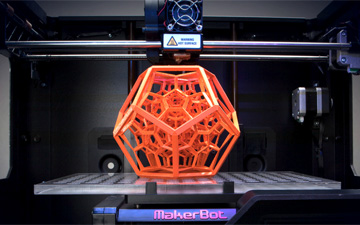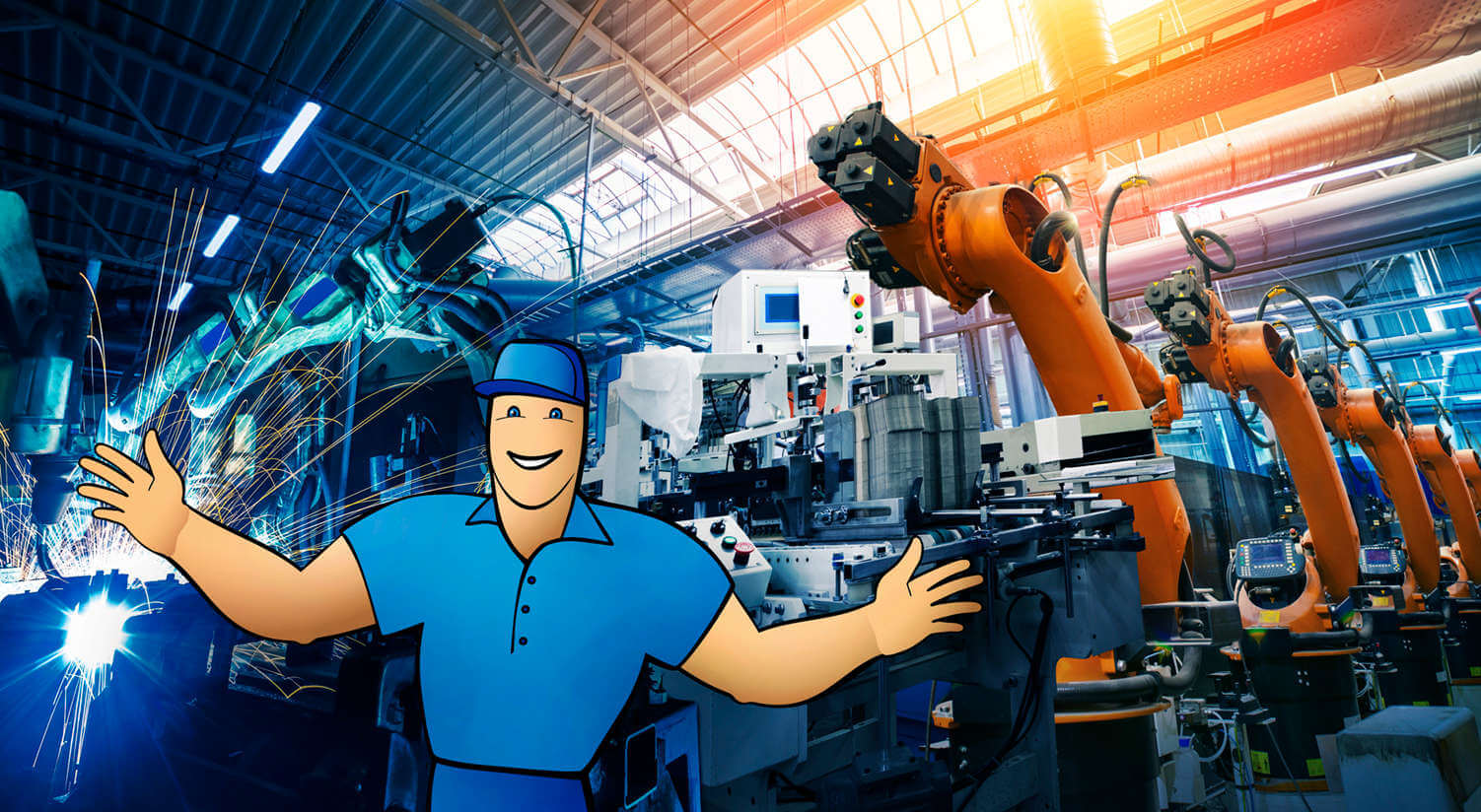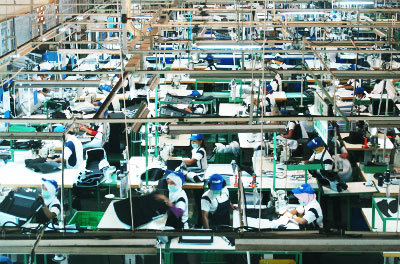Decoupling Inventory: Protecting Orders With Strategic Supplies
Every manufacturer knows how quickly things can go sideways. A delayed shipment here, equipment trouble there, and suddenly your whole operation falls behind. Decoupling inventory takes a different approach. By placing buffer stock at key production points, manufacturers can absorb these shocks without losing their delivery commitments to meet demand.
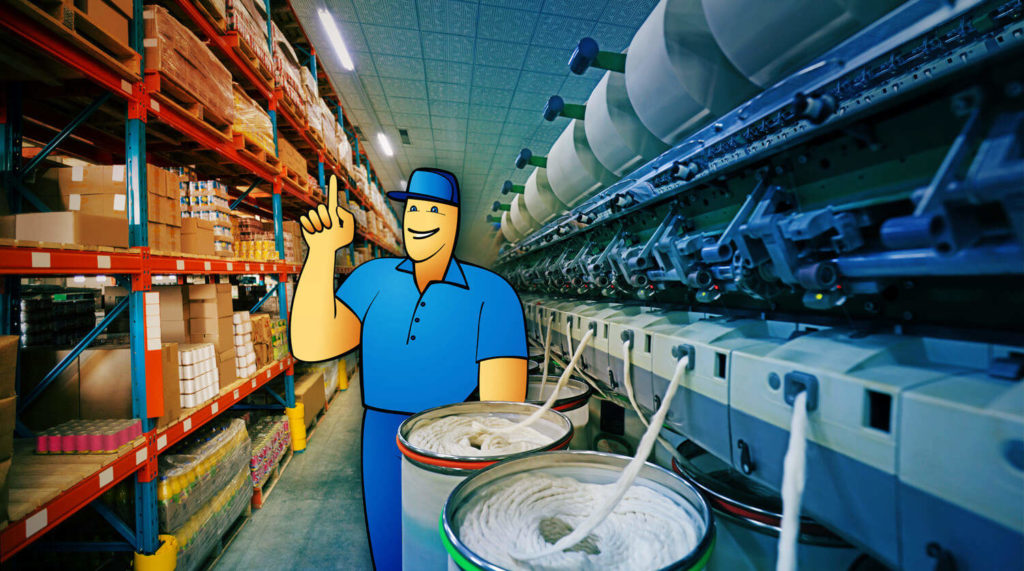
What is decoupling inventory?
Decoupling inventory is the practice of keeping extra stock, subassemblies, and work-in-process materials on hand between different production line stages.
Think of it as creating breathing room in your manufacturing process. Rather than forcing every production step to maintain identical speeds, these stock level reserves allow each area to work at its own optimal pace. Fluctuations in one department won’t immediately disrupt other stages of production.
This is your production safety net for when things go south. Sometimes equipment fails, suppliers are late, or you get hit with way more orders than you expected.
But your manufacturing line doesn’t have to stop. Your team can fix that broken machine or deal with late shipments while other departments keep working from the buffer stock you’ve got.
What could have become a full operational disruption becomes merely a temporary adjustment.
Storage location matters less than strategic placement
Decoupling inventory is held between different stages of production in decoupling points. But most manufacturers store these subassemblies and WIP (work in process) in their regular warehouse space, not necessarily right on the production floor between workstations.
So, decoupling points refer to where in your process or in a product’s routing you’ve decided to maintain these buffers. For example, between assembly and painting operations, before final quality inspection, after major subassembly completion, etc. Companies with complex operations may use several strategic decoupling points throughout their production process.
Decoupling inventory vs. safety stock vs. pipeline inventory
They may sound similar, but these three inventory types serve different purposes in your operation.
Decoupling stock sits between your production stages. It’s the subassemblies and partially finished items waiting between departments. It prevents one slow or broken machine from stopping everything else and is meant to handle problems inside your facility. Example: Assembled furniture pieces waiting for the paint booth.
Safety stock protects against external threats. Think raw materials and finished products buffer against supplier delays. Safety stock cushions you against unexpected customer demand surges and guards your operation from outside disruptions. It’s critical when onboarding new suppliers or safeguarding the sales of your highest-selling products.
Pipeline inventory covers items that are in transit: materials you’ve purchased but haven’t received yet. Goods traveling on trucks, ships, or planes. Pipeline stock creates steady arrivals instead of waiting months between shipments. Tracking it enables just-in-time delivery of components and booking manufacturing jobs ahead of time.
You may find that you’ll use all of these types of inventory in your production process.
The benefits and challenges of decoupling inventory
Does decoupling inventory matter enough to justify the extra costs and complexity? Mostly yes, because production disruptions cost more than buffer stock—often exponentially more. A single equipment failure that shuts down your entire operation can erase months of cost savings from running lean.
Benefits of decoupling inventory
Strategic inventory placement protects three critical business areas that directly impact your bottom line.
- Disruption protection. Suppose quality control finds defects after a workstation that require rework. With decoupling stock, the order isn’t stopped, and packaging can continue with the approved products. Equipment maintenance can also be scheduled without shutting down adjacent processes, so expensive equipment maintains higher capacity utilization.
- Operational flexibility. Decoupling stock lets different machines process at their optimal rates despite speed variations. And batch sizes may vary without creating bottlenecks. If setup requirements change, buffer stock stops downstream operations from being disrupted.
- Production resilience. With buffer stock, demand spikes don’t overwhelm production capacity as much, and the production line is more protected from supplier delays, raw material shortages, or transportation problems. The revenue and customer confidence this protects often outweigh the buffer carrying costs.
Challenges of decoupling inventory
Three main obstacles complicate buffer inventory management. But each challenge can be overcome to make decoupling inventory work for you.
- Cost considerations. Decoupling inventory inevitably entails more warehouse space requirements. That means increased working capital tied up in inventory, more storage costs, and more inventory overhead in general. The cash flow impact from financing reserves can be considerable and requires careful analysis and regular evaluation.
- Management complexity. Decoupling can complicate demand forecasting and production management due to time-consuming monitoring and adjustment tasks. More coordination is often required between departments, which entails higher communication.
- Optimization difficulties. Finding the balance between too little and too much buffer stock may not be that simple. There can be a heightened risk of obsolescence when products change or demand shifts. Determining optimal decoupling inventory levels requires ongoing analysis because production patterns change over time, and disruption frequency can vary greatly.
How does decoupling inventory work?
To understand decoupling inventory in practice, you need to understand three interconnected elements: where you place buffers, how production stages coordinate around them, and what systems track everything.
The mechanics themselves are straightforward. The tricky part is successful implementation, which depends on analyzing your specific production flow and bottlenecks before committing to a decoupling inventory strategy.
Analyzing and placing strategic buffers
Start by examining your production flow for trouble spots. Look for areas where one slow process regularly holds up faster ones, or where equipment failures typically shut down multiple departments.
Calculate appropriate buffer quantities by reviewing:
- How often do disruptions occur?
- How long do they typically last?
- What is the average recovery time needed?
- What is the impact of the disruptions on downstream operations?
Coordinating production flow
Balance independence with communication between production process stages. Different departments work at their own pace without creating bottlenecks, but managers need clear visibility into inventory movement and production status.
The coordination works through a simple cycle:
- Earlier processes stock the buffers.
- Later stages draw from buffers as needed.
- Monitoring prevents shortages and excessive buildup.
Create clear access rules defining when staff can use buffer stock inventory and what steps to follow when problems arise.
Integrating systems and monitoring
Connect your decoupling approach to current production and inventory management systems:
- Track inventory on hand at each decoupling point like you would any stock location.
- Configure warnings for low buffers or excessive accumulation.
- Schedule restocking to match production calendars.
- Avoid creating new bottlenecks elsewhere in the process.
Decoupling inventory examples
Seeing decoupling inventory in action makes the concept click. Different industries adapt it to solve their specific production headaches. These three examples run the gamut—furniture finishing, automotive assembly, electronics manufacturing—each using buffer inventory to tackle distinct problems based on how their operations actually run. This is done to prevent stockouts and maintain customer satisfaction.
Furniture manufacturing
Assembly teams work faster than finishing crews, creating bottlenecks at the paint booth. The company maintains assembled but unfinished pieces between departments. When assembly equipment needs maintenance or finishing falls behind, the other department continues working. Urgent customer orders get fulfilled from pre-built units rather than starting from scratch.
Automotive industry
Automotive assembly plants maintain painted body shells between the paint shop and the final assembly line. When the paint operation needs maintenance or experiences quality issues, final assembly continues installing engines, seats, and electronics using the buffer of painted bodies. Similarly, completed engine assemblies wait in inventory, so if the engine assembly line goes down, final assembly keeps working.
Electronics manufacturing
Circuit board testing takes longer than assembly, creating delays in final product completion. The company maintains a stock of QC-passed boards between these processes. Quality control problems don’t halt assembly operations, and assembly issues don’t prevent tested boards from moving to final packaging. Different production speeds are accommodated without losing overall throughput.k
When to consider using decoupling inventory?
Decoupling inventory isn’t right for every manufacturer. The key is understanding whether your specific production environment, market demands, and financial situation create conditions where buffer inventory delivers more value than it costs.
Consider implementing buffer inventory when you face these specific situations:
Production environment indicators
- Multiple workstations are running at significantly different speeds.
- Processes require substantial setup times or changeovers.
- Equipment-intensive operations where machine failures cascade through departments.
- Complex production flows with natural bottleneck points.
Market and demand factors
- Unexpected sales events that cause a sudden increase in demand.
- Unpredictable customer orders that require a quick response.
- Competition based on delivery speed and predictable order fulfillment.
- Customers with strict delivery requirements and penalty clauses.
Decoupling inventory cost implications
Implementing decoupling inventory comes with a clear financial trade-off. On one hand, buffer stock ties up your working capital and adds storage and handling expenses. On the other, it protects your production flow from paralyzed operations and damaged customer relationships. If decoupling stock is going to be a worthwhile path for you, the value of this protection has to outweigh the cost of maintaining it.d
Understanding the full cost picture
Before committing to decoupling inventory, compare the cost of holding extra inventory with the potential losses caused by production stoppages.
When disruptions hit, the financial impact often multiplies fast. Missed deliveries, emergency supplier orders, premium shipping, and dissatisfied customers can easily outweigh months of carrying costs.
Typical disruption-related expenses include:
- Lost sales from delayed or canceled orders.
- Rush production or expedited shipping fees.
- Supplier surcharges for emergency materials.
- Contract penalties or loss of key accounts.
Now compare these to the direct costs of maintaining buffer stock:
- Additional storage and facility space.
- Higher working capital tied up in WIP and subassemblies.
- Labor and handling time for managing extra stock.
- Potential obsolescence when product designs change.
In many cases, especially where downtime is expensive, buffer costs are the cheaper insurance policy.
Cost optimization pathways
The financial upside often lies in avoided losses and smoother operations. Keeping key production running during maintenance, equipment failures, or quality issues can save significant revenue. So, when strategically placed, decoupling inventory delivers tangible financial benefits. Things like fewer production stoppages that waste labor and idle expensive machines. Or reduced expediting and rush-order costs, since fewer emergencies arise.
Decoupling inventory doesn’t need to mean bloated inventory levels. The key is to continuously align buffer sizes with your actual risk exposure and production behavior.
To optimize your investment:
- Review buffer targets regularly. Adjust for changes in product mix, cycle times, or supplier reliability.
- Link buffer planning with demand forecasting. Align your stock levels with realistic order trends instead of worst-case scenarios.
- Monitor buffer turnover. Track how often buffers are used and replenished to avoid the buildup of unnecessary stock.
- Minimize obsolescence risk. Rotate older items first and clear unused buffers tied to outdated designs or low-selling products.
This way, decoupling inventory becomes a controlled, data-driven safeguard — not a storage liability. It’s about striking a balance between protection and efficiency, ensuring that your buffers serve production, not the other way around.
The production planning impact of decoupling inventory
Buffer inventory control fundamentally changes how you approach production planning and scheduling. Strategic decoupling points create flexibility that improves planning accuracy while reducing the complexity of coordinating multiple stages of production.
Enhanced planning flexibility
When every production stage is directly dependent on the previous one, even a minor delay can throw off the entire schedule. Decoupling inventory removes that fragility. With buffers in place, maintenance and setup times can be planned without the constant pressure to avoid downtime. Each department can focus on optimizing its own performance rather than keeping pace with others.
This independence improves resource allocation, reduces scheduling conflicts, and allows planners to balance workloads across departments more effectively. The result is a smoother production flow and less firefighting to maintain daily output.
Improved demand forecasting and scheduling
Forecasting and scheduling become more reliable when your system isn’t forced to operate as one tightly linked chain. Decoupling points absorb timing variations and demand fluctuations, allowing planners to make more realistic assumptions.
Instead of trying to predict every possible disruption, production managers can schedule based on average performance levels and let buffer inventory handle the deviations. This also means forecasting errors or sudden order spikes don’t immediately cascade into missed deadlines—your strategic stock cushions those impacts. Overall, production plans become both simpler and more accurate.
Risk management in planning
From a risk management standpoint, decoupling inventory provides an invaluable safety net. It reduces dependency on flawless synchronization across the line and gives planners flexibility when supply chain management issues arise.
When primary production plans fail—due to a late material delivery or a critical machine breakdown—buffer stock serves as an alternative source to keep work moving. This shortens recovery times and helps maintain delivery reliability even under adverse conditions.
With realistic planning assumptions and built-in flexibility, decoupling inventory shifts your production strategy from reactive problem-solving to proactive stability management.
Decoupling inventory tips for SMEs
Because of limited resources and tighter budgets, SMEs face unique challenges related to inventory and manufacturing costs. Here are some pro tips to stay cost-efficient:
- Identify your biggest production bottleneck and start there.
- Begin small — test buffer inventory in limited quantities before scaling.
- Prioritize areas most vulnerable to disruptions or those that most affect customer delivery performance.
- Use existing storage efficiently, and reorganize layouts before adding new space.
- Focus on low-cost, high-impact changes that improve flow without significant investments.
- Gradually expand decoupling points as benefits become measurable.
- Adjust buffer levels based on actual performance data, not assumptions.
- Integrate new practices smoothly into existing routines to minimize disruption and retraining needs.
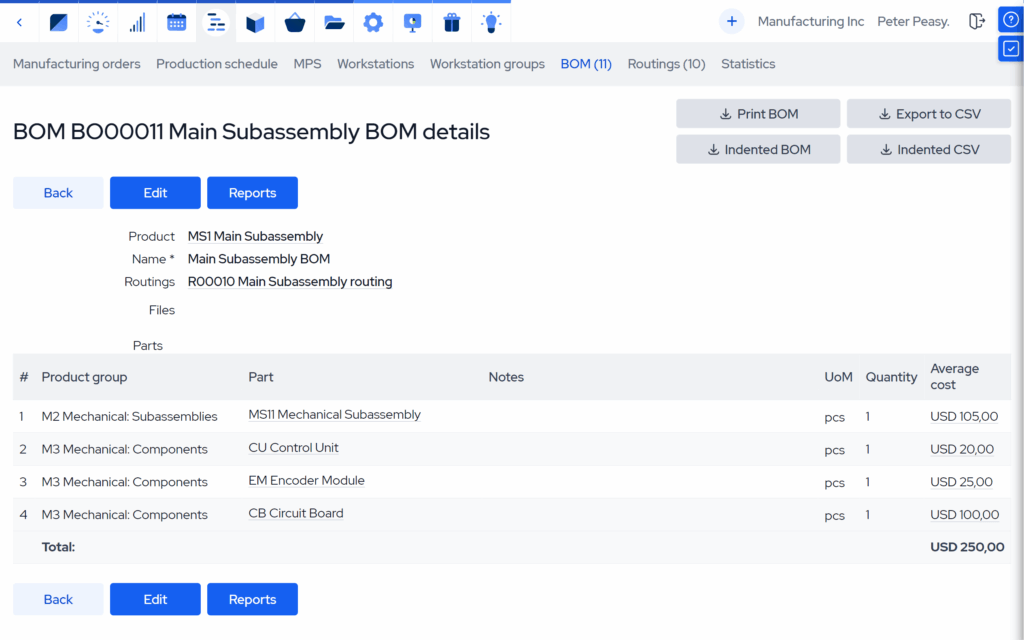
Simplify inventory management with MRPeasy
Managing decoupling inventory can get complicated, especially across multiple production points, and especially for growing manufacturers. Spreadsheets won’t cut it when you’re trying to track buffer levels, usage patterns, and replenishment needs at several locations.
MRPeasy’s inventory management system helps streamline these challenges without overwhelming your team.
- Multi-level bill of materials support. Instead of treating subassemblies as separate items scattered across different systems, you can create clear relationships between your finished products and the buffer inventory that feeds them. A painted table becomes a simple combination of an unpainted table subassembly plus paint and labor. When orders come in, the system automatically checks if your decoupled subassemblies are available or need production.
- Automated tracking of inventory levels. Set minimum and maximum levels for each decoupling point, and the system monitors everything in real-time. No more walking the production floor to check buffer levels or discovering inventory shortages after they’ve already disrupted production. Automation lets you know when buffers need attention before problems develop. Access to this data is a login away, even on your mobile or other handheld.
- Seamless integration with production planning. In MRPeasy, your buffer inventory exists for specific purposes and this is factored into production timing. Replenishment suggestions account for typical usage patterns and preset lead times, helping maintain optimal buffer levels without constant manual calculations.
- A scalable solution for growing businesses. Start with one or two critical buffer points. Add more as you prove the concept works. The system facilitates your growth. No major overhauls. No expensive upgrades.
With MRPeasy, small manufacturers get the same benefits enjoyed by enterprise operations, but without the complexity or the big price tag. You get the control and visibility needed to make decoupling inventory work. Lost production from production line slowdowns is prevented from affecting your bottom line.
The setup and daily management? Simple enough that your busy production teams will actually want to use it.
Key takeaways
- Decoupling inventory is a buffer between different production stages to keep manufacturing running smoothly. By holding subassemblies or work-in-process items between key operations, it helps absorb potential disruptions like equipment failure or late supplies without halting production.
- Decoupling inventory is different from safety stock and pipeline inventory: while safety stock guards against supplier issues and pipeline stock covers goods still in transit, decoupling inventory protects against internal production delays.
- Decoupling points – the positions in a product’s routing where decoupling stock is designated – should be positioned at natural bottlenecks or high-risk steps in production, tracked through your inventory system, and adjusted regularly to reflect real performance.
- When managed well, buffer inventory saves more than it costs. The upfront investment in extra stock and space is often outweighed by the reduced downtime, fewer rush orders, and more consistent order fulfillment it enables.
- Modern ERP/MRP systems simplify decoupling inventory for small manufacturers. Tools like MRPeasy automate buffer tracking, replenishment, and production planning, helping SMEs to achieve enterprise-level control and efficiency without complexity or high cost.
Frequently asked questions (FAQ)
Start by measuring disruption: how often do breakdowns happen, how long do they last, and how much downstream production is affected? Use that data to calculate buffer size, then adjust over time based on actual usage, changing demand, and observed variance.
Safety stock protects you from external risks like supplier delays or increased demand. Decoupling stock, on the other hand, buffers internal production flows like subassemblies or work-in-progress held between stages, so that breakdowns in one area don’t halt production everywhere.
Imagine a furniture maker: they maintain a buffer of assembled but unpainted parts between assembly and painting. If assembly runs ahead or the paint booth fails, the painting operation can continue from the buffer stock and prevent a line shutdown.
You may also like: What Is Vendor-Managed Inventory (VMI) and How to Use It?

